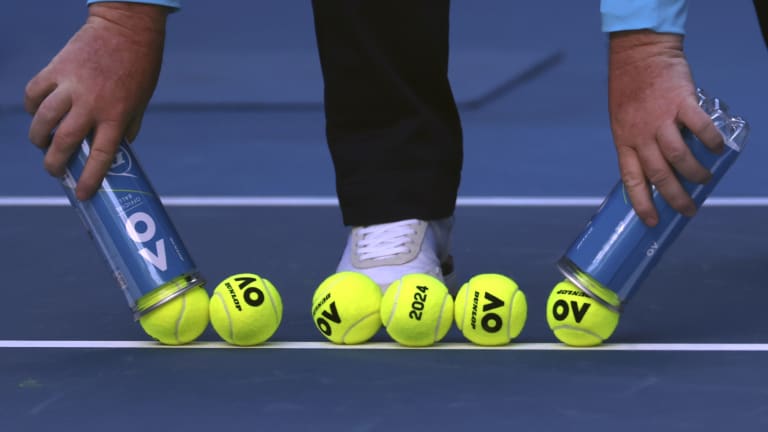Australian Open
Can too many tennis ball changes cause injuries? Players think so. The tours are checking
By Jan 17, 2024Australian Open
Nick Kyrgios takes step back from singles at Australian Open, Stan Wawrinka gets wild card
By Jan 09, 2026Australian Open
Could you win a point against a pro? Previewing the Australian Open's innovative '1 Point Slam'
By Jan 09, 2026Australian Open
Zheng Qinwen confirms withdrawal from 2026 Australian Open
By Jan 08, 2026Australian Open
Australian Open prize money hits record high
By Jan 06, 2026Australian Open
Venus Williams will become oldest woman to compete in an Australian Open main draw with wild card entry
By Jan 02, 2026Australian Open
Roger Federer to headline “Battle of the World No.1s” at Australian Open’s inaugural Opening Ceremony
By Dec 11, 2025Australian Open
Australia at Last: Reflections on a first trip to the AO
By Jan 29, 2025Australian Open
Alexander Zverev must elevate his game when it most counts—and keep it there
By Jan 27, 2025Australian Open
Jannik Sinner draws Novak Djokovic comparisons from Alexander Zverev after Australian Open final
By Jan 26, 2025Can too many tennis ball changes cause injuries? Players think so. The tours are checking
Ten brands of tennis balls—and 19 distinct types—were used across the WTA in 2023. A similar number of brands popped up around the ATP.
Published Jan 17, 2024
Advertising

Australian Open Tennis
© Copyright 2024 The Associated Press. All rights reserved